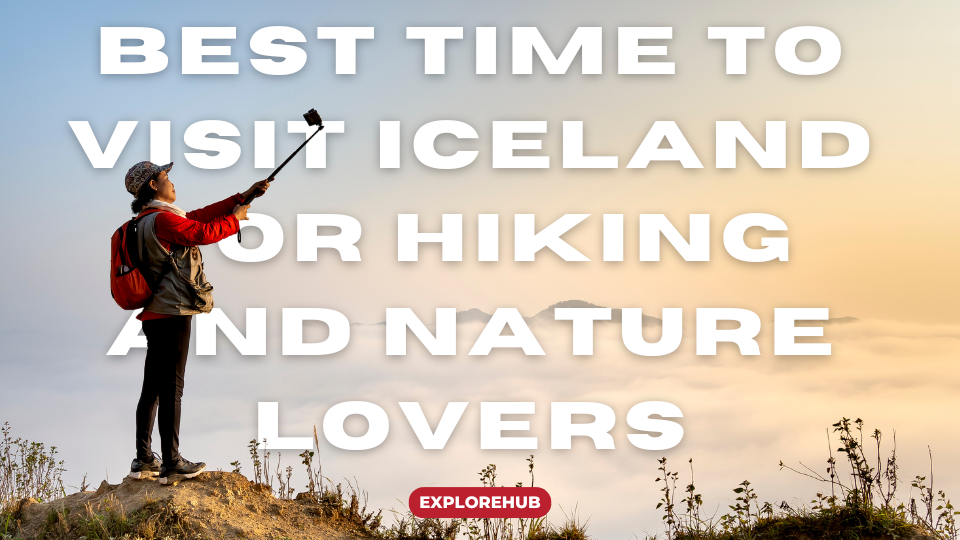Iceland, a land of fire and ice, is renowned for its stunning landscapes, dramatic waterfalls, and breathtaking hiking trails. With its unique blend of volcanic terrains, glaciers, and lush valleys, it’s no wonder that Iceland is a top destination for hiking and nature lovers. But when is the best time to explore this Nordic paradise? Let’s dive in to find out.
Table of Contents
Why Visit Iceland for Hiking?
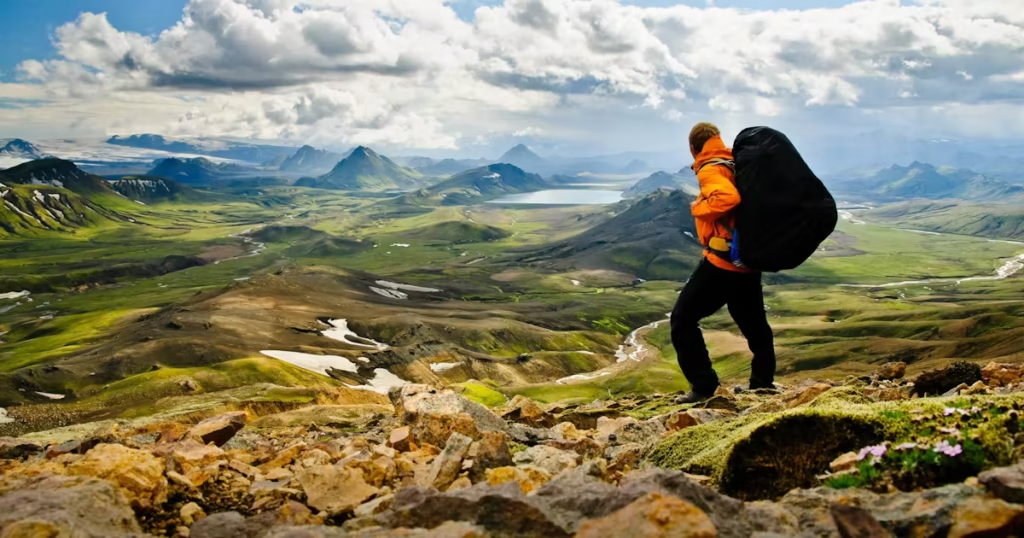
Unique Landscapes and Diverse Terrains
From otherworldly lava fields to majestic fjords and glacial valleys, Iceland offers some of the most diverse hiking terrains in the world. Whether you’re trekking across rugged highlands or exploring scenic coastal paths, every trail in Iceland is a journey through a natural masterpiece.
Abundance of Hiking Trails for All Levels
Iceland caters to all types of hikers – from beginners looking for short, easy walks to seasoned adventurers seeking challenging multi-day treks. With well-marked trails and varied landscapes, there’s something for everyone.
Understanding Iceland’s Seasons

Overview of Iceland’s Four Seasons
Iceland experiences four distinct seasons – Spring, Summer, Fall, and Winter – each offering a unique hiking experience. The landscape transforms dramatically with the changing seasons, influencing hiking conditions and accessibility.
How Each Season Affects Hiking Conditions
- Spring: Melting snow and blooming wildflowers
- Summer: Long daylight hours and mild temperatures
- Fall: Vibrant autumn foliage and cooler temperatures
- Winter: Snow-covered trails and the magical Northern Lights
Best Time for Hiking in Iceland
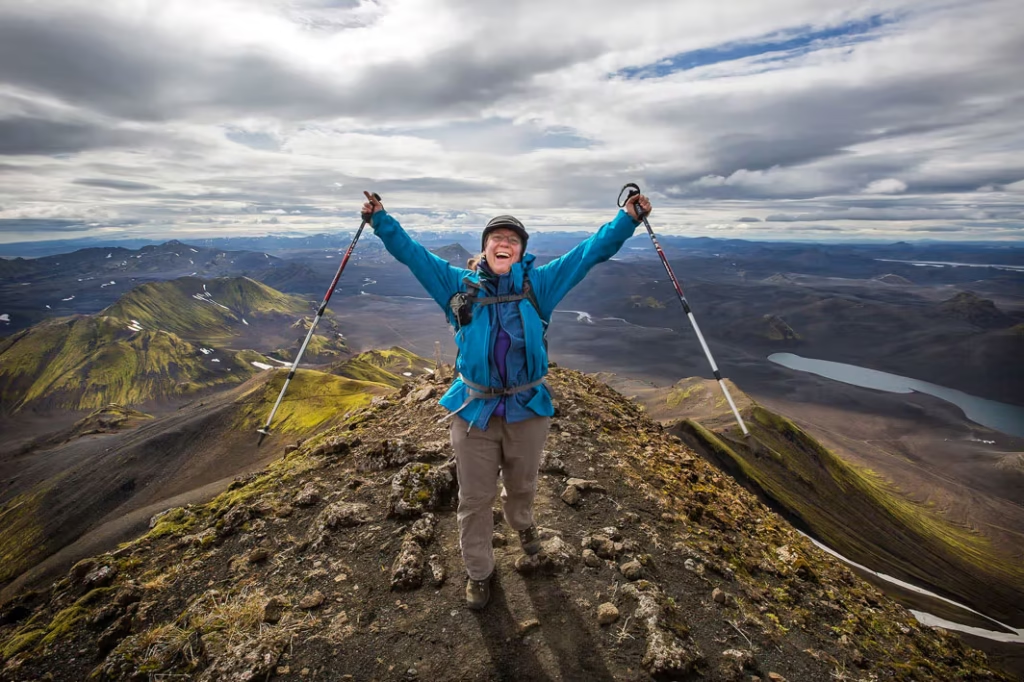
Overview of the Peak Hiking Season
The peak hiking season in Iceland is from June to August, during the summer months. This period offers the best weather, with mild temperatures and long daylight hours, perfect for exploring the outdoors.
Advantages of Visiting During the Summer Months
- Midnight sun providing extended hiking hours
- Accessible trails with minimal snow coverage
- Warmer temperatures and pleasant weather conditions
Spring Hiking in Iceland (April – May)

Weather Conditions and Temperatures
Spring in Iceland brings mild temperatures ranging from 0°C to 10°C. Snow begins to melt, and nature awakens with blooming wildflowers.
Pros and Cons of Hiking in Spring
- Pros: Fewer tourists and blooming landscapes
- Cons: Unpredictable weather and some trails may still be snow-covered
Recommended Trails for Spring Hiking
- Reykjadalur Hot Spring Trail
- Mount Esja near Reykjavik
Summer Hiking in Iceland (June – August)

Weather Conditions and Temperatures
Summer temperatures range from 10°C to 20°C, with long daylight hours due to the midnight sun.
Midnight Sun Experience
Hiking under the midnight sun is a surreal experience, allowing hikers to explore well into the night.
Popular Summer Hiking Destinations
- Laugavegur Trail
- Fimmvörðuháls Pass
- Hornstrandir Nature Reserve
Fall Hiking in Iceland (September – October)
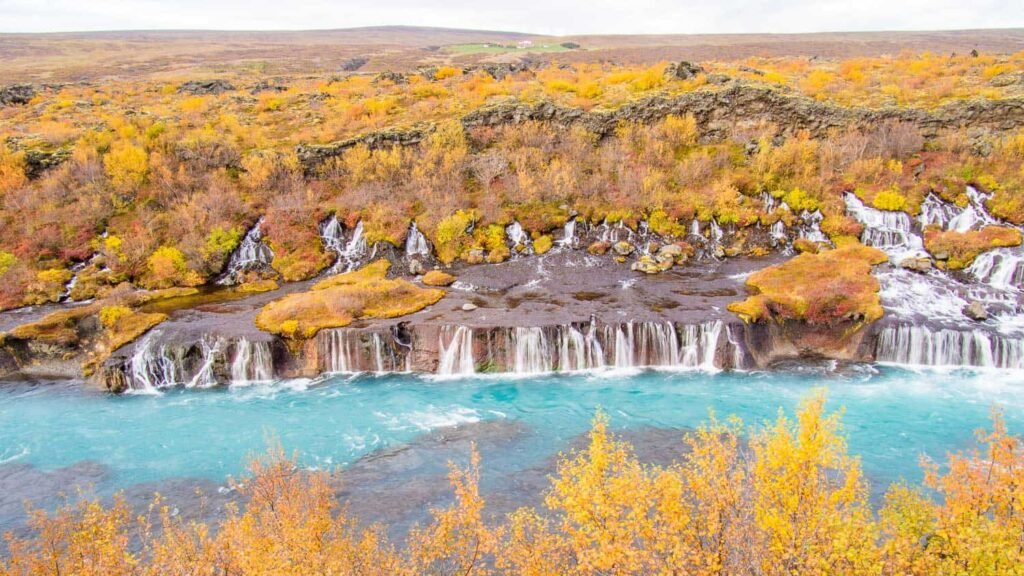
Weather Conditions and Temperatures
Cooler temperatures ranging from 0°C to 10°C with vibrant autumn colors.
Fewer Tourists and Vibrant Autumn Colors
Fall offers a more serene hiking experience with fewer crowds and stunning foliage.
Ideal Hiking Trails for the Fall Season
- Þórsmörk Valley
- Hveragerði Hot Springs Trail
Winter Hiking in Iceland (November – March)
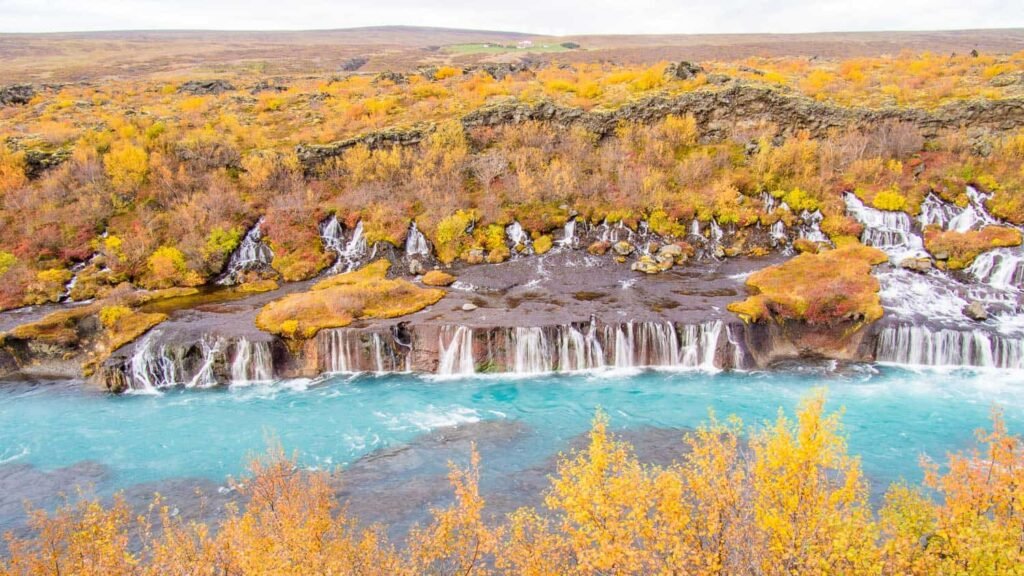
Weather Conditions and Challenges
Harsh weather conditions with snow and ice-covered trails.
Northern Lights Opportunities
Winter hikes provide a chance to witness the magical Northern Lights.
Safety Tips for Winter Hiking
- Check weather forecasts regularly
- Carry crampons and other winter hiking gear
Top Hiking Trails in Iceland
- Laugavegur Trail – Iconic multi-day hike with colorful rhyolite mountains
- Fimmvörðuháls Pass – Spectacular volcanic landscapes and waterfalls
- Hornstrandir Nature Reserve – Remote wilderness with Arctic foxes
- Glymur Waterfall Trail – Iceland’s second-highest waterfall
Essential Hiking Gear for Iceland
- Clothing: Layered clothing for unpredictable weather
- Footwear: Waterproof hiking boots with good grip
- Backpack Essentials: Maps, first-aid kit, and sufficient water
Wildlife and Nature Encounters
The fauna of Iceland, which includes puffins and Arctic foxes, enhances the trekking experience. Keep in mind to respect their environment and view from a distance.
Also Visit:
When Is the Best Time to Visit Iceland? A Comprehensive Overview
Best Time to Visit Iceland for Northern Lights Enthusiasts
Best Time to Visit Iceland for Photography Lovers
The Best Time to Visit Iceland for Whale Watching
Best Time to Visit Iceland for Couples and Romance
Conclusion
The best time to visit Iceland for hiking and nature exploration is from June to August, during the summer season. However, each season offers unique experiences, from the midnight sun in summer to the magical Northern Lights in winter. Whether you’re a casual hiker or an adventure enthusiast, Iceland’s diverse landscapes and breathtaking trails await.

